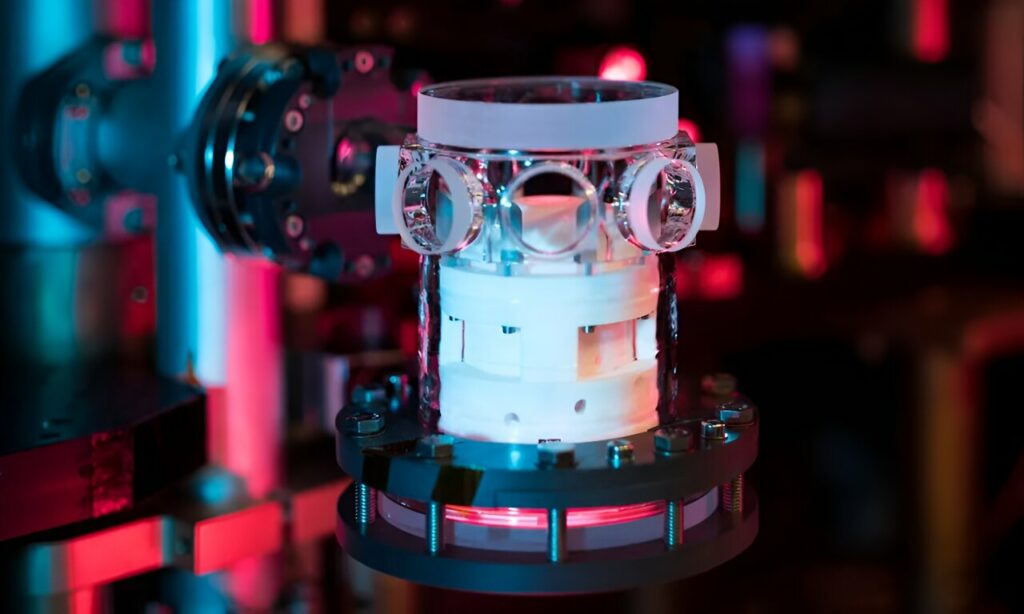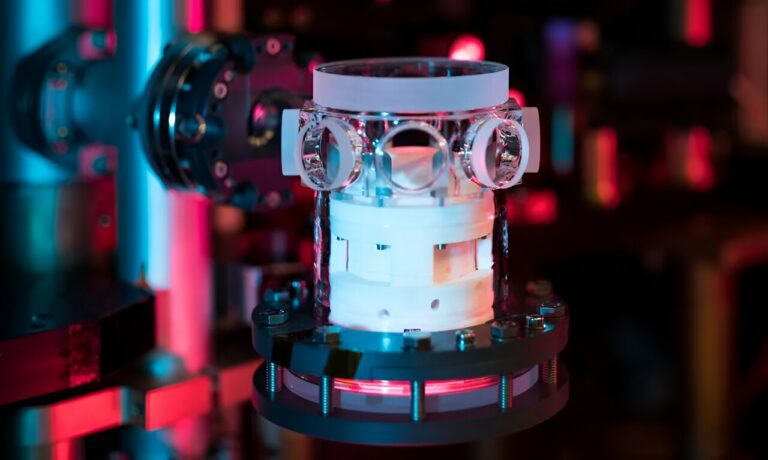Exploring the Depths of the Quantum Realm: A Comprehensive Examination of Dipolar Phenomena
In a recent collaborative effort, two research teams, one under the leadership of Francesca Ferlaino and the other headed by Markus Greiner, have united their expertise to develop an advanced quantum gas microscope tailored for the study of magnetic quantum matter.
This cutting-edge instrument has unveiled intricate dipolar quantum phases shaped by interactions, as detailed in the findings published in Nature. The investigation into magnetic atoms holds a central position in Ferlaino’s exploration of uncharted quantum phenomena.
Operating at both the Institute of Quantum Optics and Quantum Information (IQOQI) of the Austrian Academy of Sciences and the Department of Experimental Physics at the University of Innsbruck, Ferlaino and her team achieved the groundbreaking feat of creating the first Bose-Einstein condensate of erbium in 2012. Subsequently, in 2019, her team played a pivotal role in the observation of supersolid states in ultracold quantum gases of magnetic atoms. Markus Greiner, an experimental physicist at Harvard University, is renowned for pioneering optical techniques that enable the direct observation of individual atoms.
Leveraging high-resolution microscopy, the Harvard team has uncovered numerous exotic phenomena in strongly correlated ultracold atoms, including the observation of anti-ferromagnetic phases in 2017.

Several years back, Ferlaino and Greiner collaborated, pooling their expertise to build a specialized quantum gas microscope designed for the study of magnetic atoms, with the goal of uncovering novel phenomena. “Due to their distinct magnetic characteristics, these particles wield influence over longer distances compared to their non-magnetic counterparts, and their impacts exhibit consistent directionality,” highlights Ferlaino. “The distinctive attributes of these particles introduce an interaction regime in quantum gases that is not observable in conventional experiments, providing new insights into solid-state behavior.”
New quantum solids observed
For an extended period, the research teams collaborated to develop and construct two distinct experiments, one situated in Austria and the other in the United States. Presently, both Harvard and Innsbruck are outfitted with quantum gas microscopes specifically designed for dipolar quantum gases. This technology, when combined with laser beams, forms a light crystal in which erbium atoms, cooled to temperatures approaching absolute zero, reside. Magnetic fields reposition these particles, granting control over their long-range, dipolar interactions.
The arrangement, with the microscope’s lens nestled within the glass vacuum cell, brings to mind the imagery of a ship inside a bottle. In a publication in Nature, Greiner’s group now unveils the initial results of their experimental work on this innovative platform. The researchers have showcased the capability to generate diverse dipolar quantum solids from superfluid phases by adjusting the interactions between particles. Various patterns emerge in the microscope, spanning from stripes and checkerboards to diagonal lines. “
In this context, the long-range dipolar interactions among particles dictate the phase of the quantum matter, with the organizing power of the light crystal being disrupted,” explains Ferlaino. At the core of this groundbreaking achievement lies years of close collaboration between two experimental research groups separated by an ocean. This joint effort now enables simulations of quantum systems with long-range, dipolar interactions, establishing the foundation for a fresh understanding of quantum matter. “Such simulations provide captivating insights into phenomena governed by these interactions, such as ferromagnetism,” remarks Ferlaino.
This article is republished from PhysORG under a Creative Commons license. Read the original article.
Do not forget to share your opinion with us to provide you with the best posts !




0 Comments